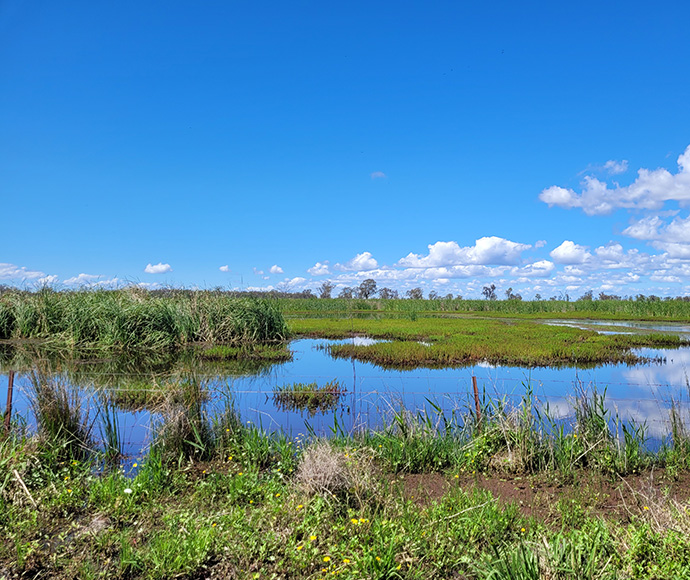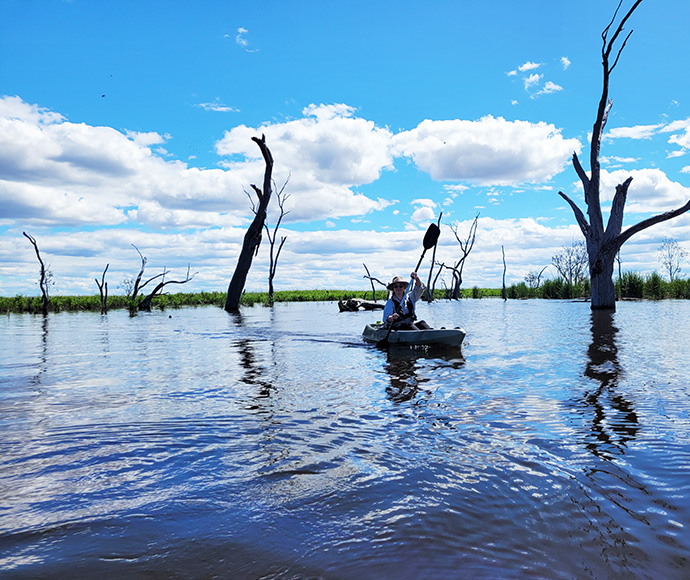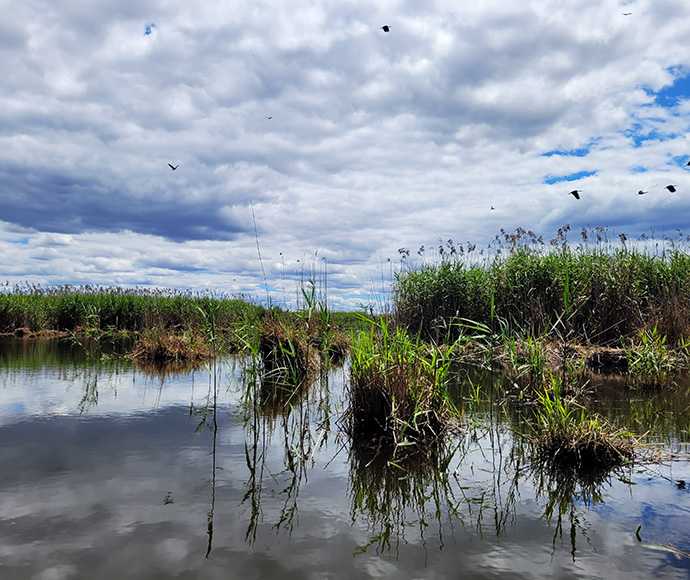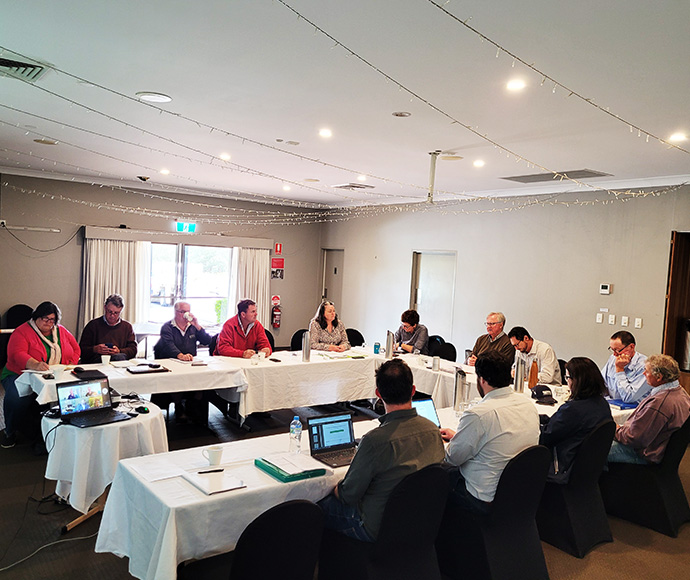On Tuesday 8 November 2022, the Macquarie-Cudgegong Environmental Water Advisory Group (EWAG) met in Dubbo to review its environmental water use strategy for the 2022–23 water year.
Catchment conditions
A minor to major flood warning was in place for the Macquarie River downstream of Burrendong Dam, which was at 137% capacity at the time of the meeting.
WaterNSW informed the EWAG flood mitigation zone (FMZ) releases were likely to peak at 50,000 ML/day in early November 2022 and are forecast to continue until the new year. Windamere Dam on the Cudgegong River was at 101% capacity at the time of the meeting and has been spilling since 9 October 2022.
A wet and cool summer is likely, with the Bureau of Meteorology forecasting a 65% chance of exceeding median rainfall for November 2022 to January 2023 and a 20% chance of exceeding the median maximum temperature for the same period.
Recent environmental responses
The area inundated in the Macquarie Marshes has continued to expand since August due to recent flows, rising from 190,000 hectares in August to more than 230,000 hectares at the time of the meeting.
Wetland vegetation throughout the inundation areas is booming with the warming conditions post-frost.
Monitoring activities have been constrained by access; however, conditions are known to be supporting waterbird breeding, including:
- ibis – 3 large-scale colonies recorded, several small-scale colonies
- egrets
- nankeen night herons and other herons – at least 5 large-scale colonies and many small-scale
- royal spoonbills – one colony
- magpie geese – many thousands nesting across the marshes
- a range of non-colonial waterbirds.
Review of environmental watering objectives and delivery plan
The table below outlines drought recovery activities the Environmental Water Advisory Group had previously supported in 2022–23.
| Drought recovery activities 2022–23 | Status |
|---|---|
| Supporting native vegetation for a third consecutive year of drought recovery | Complete |
| Improving event readiness of Macquarie Marshes colony sites in August 2022 | Complete |
| Assisting with native fish breeding in the mid- and lower-Macquarie River | Complete |
| Supporting colonial waterbird breeding events when needed | May require support |
| Securing a minimum carryover for future droughts | Complete |
Most of these have been met by the ongoing wet conditions without the need to intervene.
Upon review of current conditions and a revised meteorological outlook, the group's consensus was to support large-scale viable waterbird colonies from late summer to early autumn 2023 if required. Large-scale breeding events are becoming increasingly rare. The Macquarie Marshes has had only 4 large-scale waterbird breeding events in the last 20 years. Successful breeding supports the recovery of colonial waterbird populations, which are in decline. Water is required around nests to protect breeding birds and their offspring from predators and prevents adults from abandoning young birds still on nests.
The EWAG members recognised that the community may question why additional water should be added after a large flood. The decision to support colonies will be made considering the number of birds still breeding, how long water would need to be supplied, and the water levels in the wetlands.
Monitoring is done in collaboration with New South Wales and Commonwealth agency partners. Colonies are checked regularly on the ground and from the air to ensure decisions are made using up-to-date information.
The Environmental Water Advisory Group discussed the flow rates necessary to support waterbirds to complete breeding activity. Water managers confirmed that flows would be delivered at rates well within channel capacity at Marebone and were unlikely to prolong flooding in areas outside the wetlands or impact on access.



